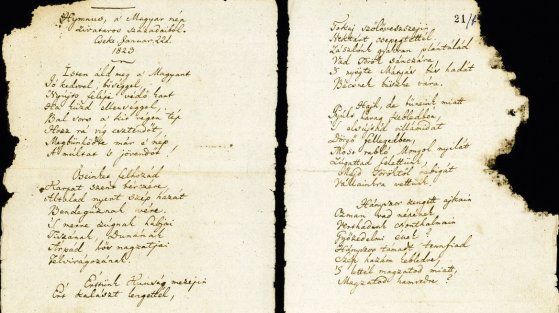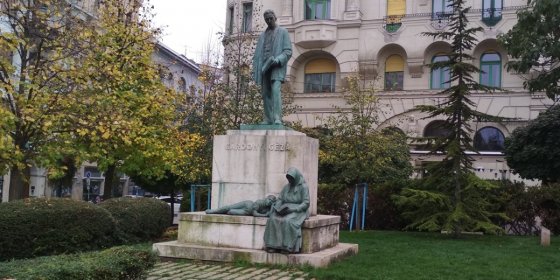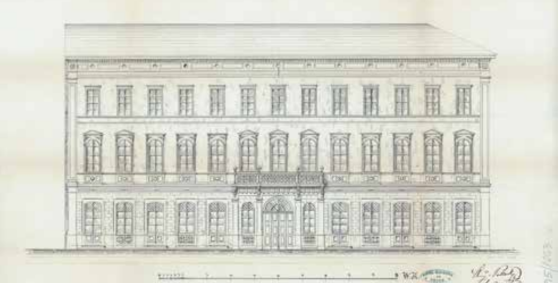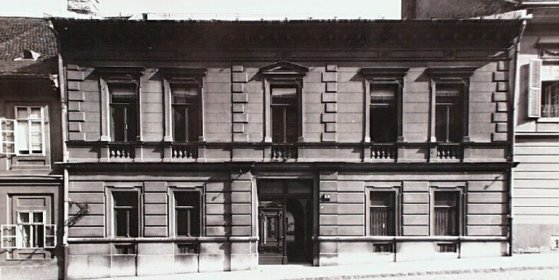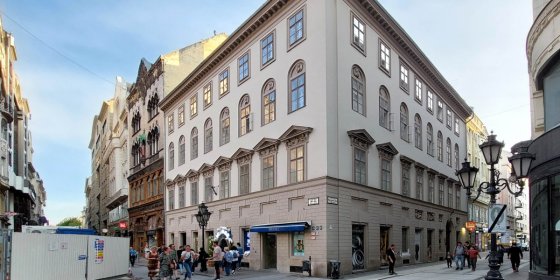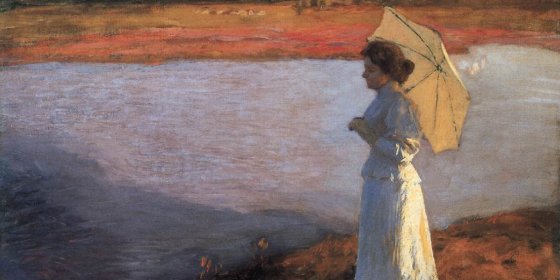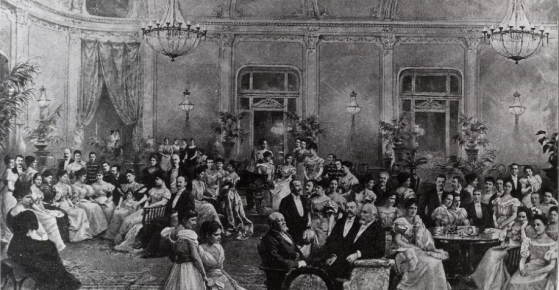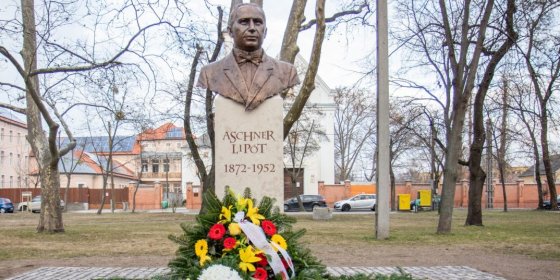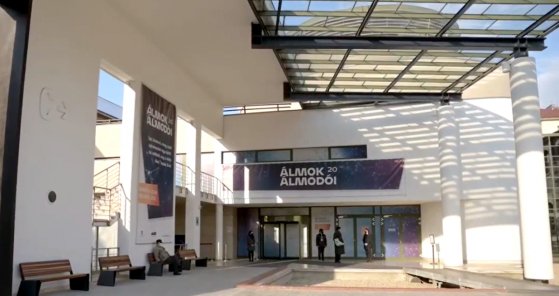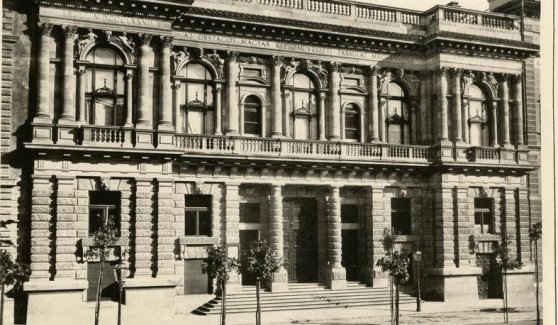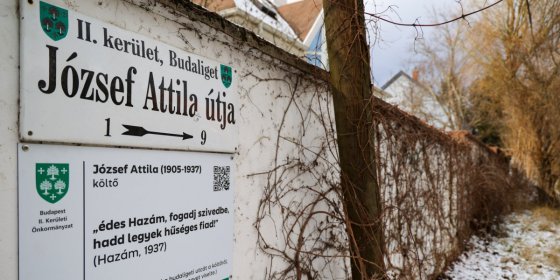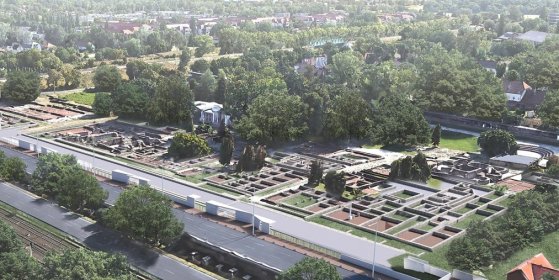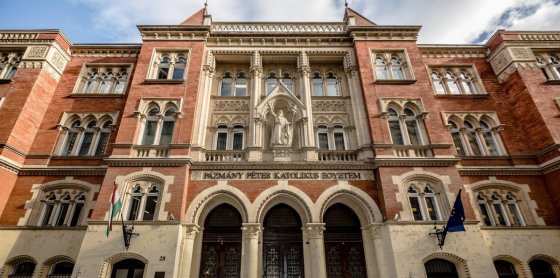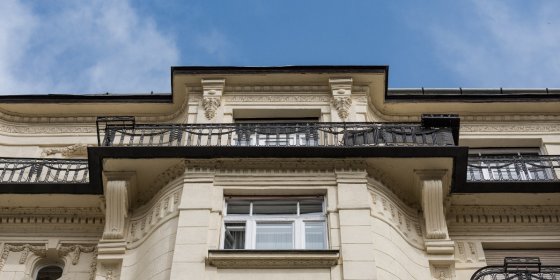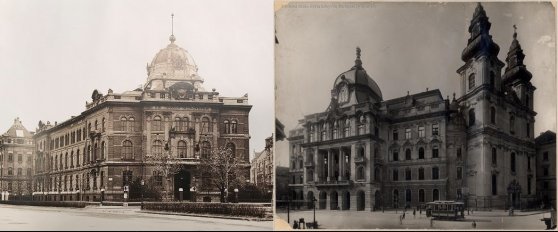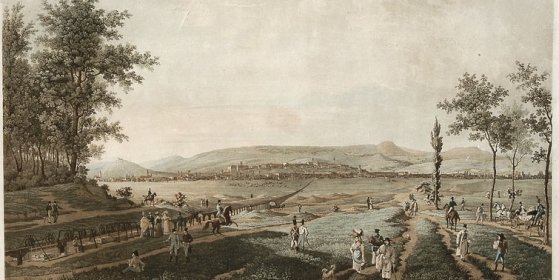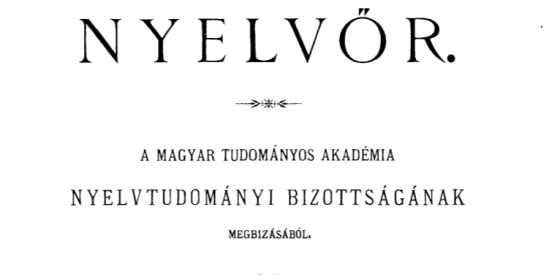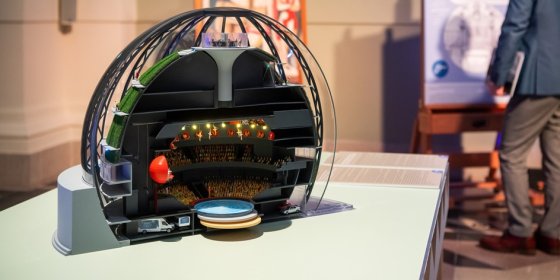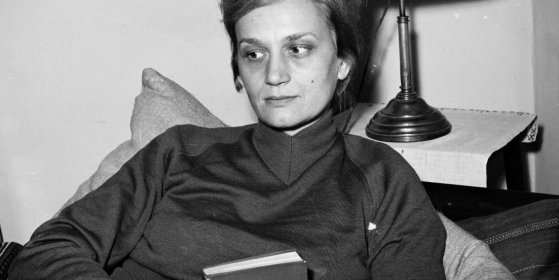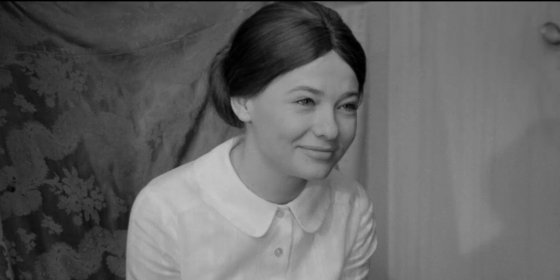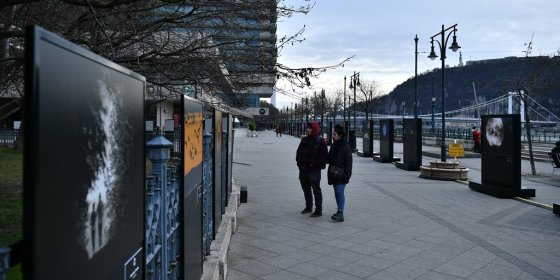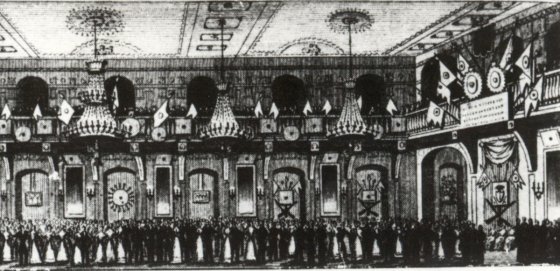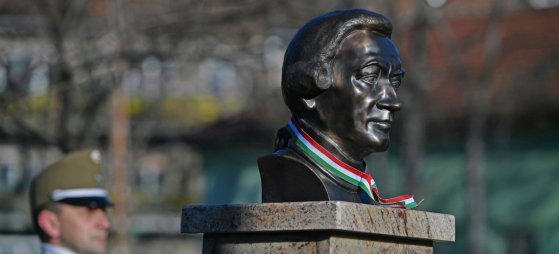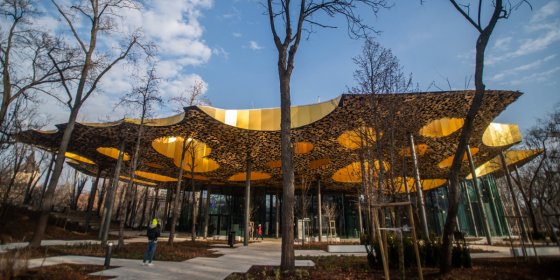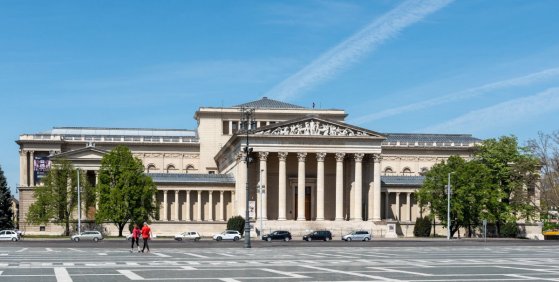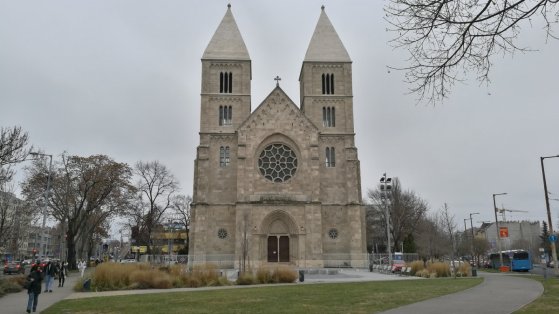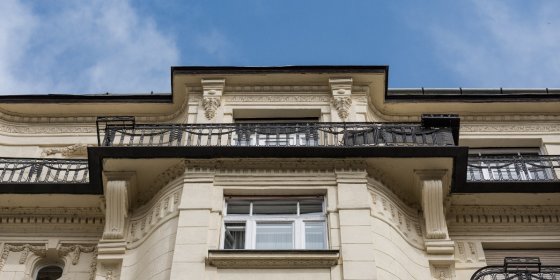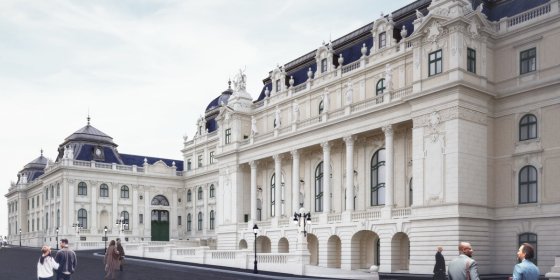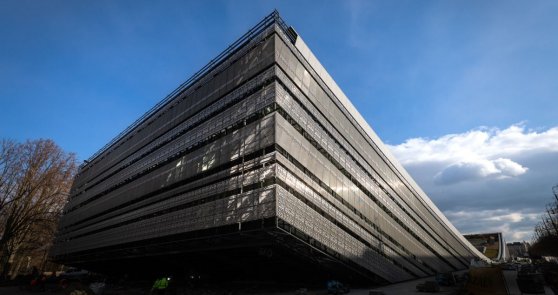 The „intertwined history” of the bridges and the city of Budapest
Which ideas and events have shaped the fate of bridges of Budapest and the cityscape? Alongside many other interesting facts, this question is also answered this newly published book by the Budapest City Archives, which introduces the history of bridges in Budapest.
The „intertwined history” of the bridges and the city of Budapest
Which ideas and events have shaped the fate of bridges of Budapest and the cityscape? Alongside many other interesting facts, this question is also answered this newly published book by the Budapest City Archives, which introduces the history of bridges in Budapest.
culture
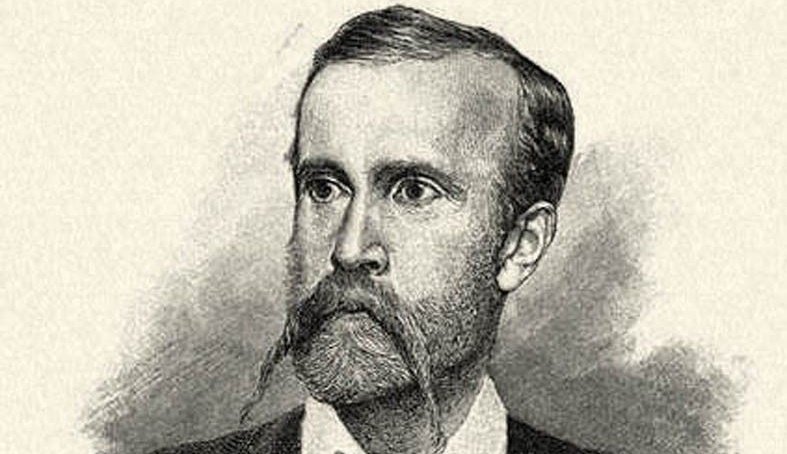 Imre Madách, born 200 years ago, became a writer in Pest
Imre Madách, born 200 years ago, became a writer in Pest
January 28, 2023 at 9:00 AM
The young Imre Madách lived in Pest for three years. While completing his law studies at the University of Pest, he also got involved in social and cultural life. He regularly visited the performances of the Hungarian Theatre of Pest, attended concerts at the National Casino, but the highly educated young man also learned to paint, fence, and play the piano in the capital. His first volume was published here. Pestbuda remembers Imre Madách, who was born 200 years ago.
The birthday of the National Anthem: the Ministry of Culture invites people to a joint recitation
January 16, 2023 at 12:30 PM
On the Day of Hungarian Culture, 22 January, on the 200th anniversary of the National Anthem, 200 children, 100 from the motherland and 100 from abroad, will recite Hungary's national poem on the main steps of the Parliament. At the same time, one of the most important Hungarian poems of all time will be recited in four locations across the border, as well as in Ferenc Kölcsey's former residence, Szatmárcseke, and in Veszprém, which has been awarded the title of European Capital of Culture.
The hermit of Eger was a regular guest of Pest's coffee houses - Géza Gárdonyi died a hundred years ago
October 30, 2022 at 10:00 AM
Although his name lives on in the public consciousness as a hermit of Eger, Géza Gárdonyi was a regular figure in the cultural and literary life of Budapest at the turn of the 19th century. He was an eyewitness to the development of the city, as a journalist he reported for years from the Old House of Representatives, he visited the famous artist's salon of the Fesztys, but he was also considered a regular guest at the Centrál, the Valéria or the New York Café. Pestbuda now remembers Géza Gárdonyi, who died 100 years ago today.
Ágoston Pollack, born 215 years ago on this day, created in the shadow of his father
June 9, 2022 at 9:00 AM
Ágoston Pollack, the son of the outstanding classicist architect, Mihály Pollack, designed several public and private buildings in Pest and Buda. Most of it has been demolished and rebuilt, many of his plans have survived only in the form of documentation. Ágoston Pollack also collaborated with Miklós Ybl and his own father, for example on the expansion of Szent Rókus Hospital. Ágoston Pollack's activity and appreciation were relegated to the background in the shadow of his father's masterpieces, although at the sight of his plans we can say that he was one of the outstanding architects of his time.
Gothic behind the gate - One of the most researched residential buildings of the Buda Castle is being renovated
May 25, 2022 at 9:00 AM
The one-storey listed building at 9 Országház Street will be renovated. One of the most researched residential buildings in the Buda Castle District was built in the 15th century, then rebuilt in the Baroque style in the 17th century. It underwent another major transformation in the 19th century. The Gothic sedilia in the front door of the house are of outstanding value in the Castle District, but its facade is also remarkable.
The oldest residential building on Váci Street
May 17, 2022 at 9:00 AM
The classicist corner building at 13 Váci Street and 15 Régiposta Street is the oldest still standing house on Váci Street, and according to research, it was the first three-storey residential building in the capital. The first art shop in Pest opened its doors here, then in the second half of the 19th century, it housed one of the most prestigious fashion salons in Europe, the Alter and Kiss Fashion House. Kálmán Mikszáth was a famous tenant. The house has undergone several mutilations over the past 215 years, but thanks to the restorations, much of its original beauty is still preserved today.
Béla Iványi-Grünwald, a popular figure in art life in Budapest, was born 155 years ago
May 16, 2022 at 12:00 PM
Among the innovators of Hungarian painting at the turn of the century, we consider Béla Iványi-Grünwald, who was born 155 years ago. He studied at the Mintarajziskola [Design School] on Andrássy Avenue, later becoming a popular and defining figure in Budapest's art life, one of the founders and core members of the Fészek Klub [Nest Club]. He is also the founder of the Nemzeti Szalon [National Salon], an association of artists dissatisfied with official art policy, with its headquarters in Erzsébet Square. When he died at János Hospital in 1940, his contemporaries said goodbye not only to a talented artist but also to an always cheerful social man.
Studio in the Inner City - The Strelisky photographer dynasty in Budapest
April 20, 2022 at 10:00 AM
Lipót Strelisky was one of the first to deal with daguerreotypes in Budapest in the 1840s. In his studio in Dorottya Street, he photographed the politicians, aristocrats and artists of the age. His son, Sándor Strelisky, who died a hundred years ago, was the first photographer in Hungary to take multi-character photographs with a special technique. Strelisky photos are invaluable today and help us learn about Budapest's past.
Who Flourished Tungsram - Statue of Lipót Aschner, 150 years old, erected
February 16, 2022 at 3:30 PM
A statue of Lipót Aschner, born 150 years ago, was erected in Újpest. The bronze statue of the sculptor Dávid Tóth, the father of Hungarian light bulb production and development, the flourisher of the Tungsram brand, the president and patron of the Újpest Gymnastics Association (UTE), and the sculptor Dávid Tóth, was placed in Lipót Aschner Square in Újpest.
The new exhibition of the Millenáris presents the inventions of world-famous Hungarians
February 15, 2022 at 2:00 PM
The exhibition of the history of science entitled The Dreamers of Dreams 20 - World-Speaking Hungarians, Hungarian Inventions will be presented on the Millenáris from 6,000 square meters on a 1.5-kilometer route. The history of Hungarian transport, medicine and life sciences, infocommunication come to life, but visitors can also learn about significant Hungarian developments in the industrial and energy sectors. The aim of the exhibition is to show that Hungarians were not only successful in the past, but still have these qualities.
The 150-year-old University of Fine Arts evokes the history of the Old Art Gallery
January 31, 2022 at 3:00 PM
In addition to the newly restored Lotz frescoes of the main building of the Old Art Gallery, the exhibition entitled Space Reservations - The Stories of the Old Art Gallery of the Hungarian University of Fine Arts (MKE) awaits the public from 15 February with classic and contemporary works of art and documents evoking the house's past. The exhibition is part of a series of programs celebrating 150 years of the University.
Street signs in Buda bearing the names of famous creators have become richer with quotations
January 27, 2022 at 8:00 PM
In the 2nd district, additional signs were placed under the street signs bearing the names of famous creators. The boards provide quotes either said or written by the creator or about the creator. The street sign named after Sándor Petőfi, Attila József or Kálmán Mikszáth, who was born 175 years ago, became richer with valuable additions.
We would like to promote the architectural monuments of the Roman era in Óbuda
January 27, 2022 at 3:00 PM
A promenade and a stone archive will also be built during the development that is now beginning at the Aquincum Museum, and the everyday life of the Roman soldiers once stationed here is also planned to be presented to visitors in a spectacular exhibition. We would also like to promote the archaeological and architectural monuments from the Roman Empire in Aquincum and other parts of Óbuda in the 3rd district.
They are looking for a contractor for the new campus of the Pázmány Péter Catholic University
January 24, 2022 at 11:00 AM
The new, unified campus of the Pázmány Péter Catholic University will be located in the Palace District of Józsefváros. As part of the works until 2027, a new campus building will be erected at 26 Szentkirályi Street, and the listed building at 15 Bródy Sándor Street will be renovated, 28-30 Szentkirályi Street Palace will be remodeled and connected to the adjoining university building. An open tender was issued for the construction.
Endre Ady's former home in the city center has been renovated
January 15, 2022 at 9:30 AM
On 18 January, the renovated Ady Memorial Museum will open at 4-6 Veres Pálné Street, 5th District. The last home of Endre Ady, which today is a branch of the Petőfi Literary Museum as a memorial museum, awaits those interested with more friendly public spaces, a renewed exhibition, new museum pedagogical sessions and a series of programs.
The demolished dome of the ELTE and BME buildings will be restored
January 13, 2022 at 7:00 PM
The roofs of the historical domes of the buildings of the Budapest University of Technology and Economics in Szent Gellért Square and the University Square of Eötvös Loránd University are being reconstructed. They were destroyed during the devastation of World War II. During the reconstruction, the roof ornaments connected to the dome will be rebuilt, as well as the demolished sculptural elements.
A traveling exhibition presents the history of Királydomb in Rákosmező
January 13, 2022 at 4:00 PM
A national memorial site was born! The Community of Hungarian Patriots presents the Királydomb in Rákosmező at a traveling exhibition entitled. In today's Kőbánya, next to the Rákos stream, the installation depicts the scene of medieval parliaments with the help of period documents and authentic depictions. The aim of the exhibition is to bring back to the national memory the place declared by the Parliament to be a national memorial in 2020, but undeservedly forgotten in the public consciousness. The exhibition also includes a copy of the famous Rákosi order issued in 1505.
The first Hungarian language magazine is one hundred and fifty years old
January 12, 2022 at 4:00 PM
One hundred and fifty years ago, on 12 January, 1872, the first issue of the Hungarian Language Guard magazine, edited by Gábor Szarvas, was published. In the 19th century, the paper took a stand in discussions of language renewal, opposing foreign turns. He also laid down rules for spelling and grammar, and he had great merit in learning about dialects and vernacular.
Such will be the National Circus Arts Center planned next to the Western Railway Station
January 11, 2022 at 7:30 PM
A model of the building of the National Circus Arts Center to be built next to the Western Railway Station was also presented at a professional and scientific conference held on the eve of today's 14th Budapest International Circus Festival. Participants were introduced to the history of European circus buildings, and an exhibition was opened.
The poet Ágnes Nemes Nagy was born in Budapest 100 years ago
January 3, 2022 at 7:30 PM
Ágnes Nemes Nagy, a poet, translator and essayist who was born a hundred years ago, writes masterpieces such as the poems of the book Wandering Years or the Solstice, or All Children's Poems. The poet was born in Budapest and died here in the 12th district 5/b Királyhágó street - where she lived for about thirty-three years.
Which public area should be named after Mari Törőcsik in Újbuda?
December 21, 2021 at 2:00 PM
Mari Törőcsik lived in Újbuda for many years, where a public space will soon be named after her. Locals can now vote to decide whether the current Etele Square, Independence Park, Etele Park or the area around Bottomless Lake will be named after the legendary actress in the future.
Hungary 365 - Photo exhibition opened at the Danube Promenade in Pest
December 20, 2021 at 2:00 PM
An exhibition of the best images of the first two years of the Hungary 365 photo competition was opened at the Danube Promenade in Pest. The outdoor exhibition is open until 9 January.
Where the 12-year-old Liszt also played - The Seven Electors' Inn was the centre of social life in Pest
December 19, 2021 at 11:00 AM
The most prestigious balls of Pest in the first decades of the 1800s were held in Downtown, at 9 Váci Street, on the floor of The Seven Electors' Inn (Hét választófejedelem fogadó). Joseph II also stayed at the inn, 12-year-old Ferenc Liszt gave his first concert in Pest here. The audience could also admire the plans of the first permanent bridge between Pest-Buda in the Great Hall of The Seven Electors' Inn. The house was demolished in 1840, and the three-storey classicist residential house of József Hild was built in its place, which houses the Pesti Theatre nowadays.
A public statue was erected to Móric Benyovszky in Józsefváros
December 17, 2021 at 5:00 PM
Móric Benyovszky received a public sculpture in the 8th district in Józsefváros. The Hungarian world traveler was born 280 years ago, died 235 years ago, and the inauguration of his bronze portrait was the closing event of the Benyovszky Memorial Year.
The imposing building of the Hungarian House of Music in Városliget has been completed
December 16, 2021 at 6:00 PM
The House of Hungarian Music was built in Városliget. Opening on 22 January with an interactive music history exhibition, the building will have a triple function: hosting concerts, dance halls and community music, providing space for education and music pedagogy, as well as interactive permanent and temporary exhibitions, a sound field and a creative sound space.
The renewed Városliget wing of the Museum of Fine Arts opened with a permanent exhibition
December 15, 2021 at 5:00 PM
As a new stop in the comprehensive reconstruction of the museum, a new permanent exhibition unit of the Old Gallery of the Museum of Fine Arts was opened in the renovated part of the Városliget wing of the building, more than one and a half thousand square meters, arranged according to a new concept.
The new communal areas of the parish of St. Margaret in Lehel Square were inaugurated
December 11, 2021 at 6:00 PM
The new communal spaces of the Catholic parish of St. Margaret's were inaugurated in Lehel Square, in the 13th district. The communal areas were designed from a former parishioner's apartment in a condominium near a neo-Romanesque church consecrated in 1933.
Endre Ady's downtown home is being renovated - Today the poet's former apartment is a museum
December 10, 2021 at 3:00 PM
The Ady Memorial Museum on Veres Pálné Street is being renovated, where the poet lived between 1917 and 1919 with his wife, Berta Boncza. In the three-room apartment, the spaces will be renovated and a new room will be created for museum pedagogical classes.
Here are the first visual plans for the restoration of the Buda Castle
December 3, 2021 at 1:30 PM
A detailed technical, architectural, artistic and functional survey of the Buda Castle has been completed, thanks to which the experts now know exactly the transformations after the Second World War. At the same time, planning for the complete restoration of the building complex began. The first visual designs have now been completed, led by Robert Gutowski.
The final works are being carried out on the new Ethnographic Museum building in Városliget
December 2, 2021 at 10:00 AM
The imposing glass façade has been completed and work on the more than 7,000-square-foot roof garden will soon be completed. The new Ethnographic Museum in the city park, which will open to the public in the spring of 2022, will be one of the most modern ethnographic institutions in Europe.
More articles
 The „intertwined history” of the bridges and the city of Budapest
Which ideas and events have shaped the fate of bridges of Budapest and the cityscape? Alongside many other interesting facts, this question is also answered this newly published book by the Budapest City Archives, which introduces the history of bridges in Budapest.
The „intertwined history” of the bridges and the city of Budapest
Which ideas and events have shaped the fate of bridges of Budapest and the cityscape? Alongside many other interesting facts, this question is also answered this newly published book by the Budapest City Archives, which introduces the history of bridges in Budapest.
 The Bridge Report, which brought a turning point in the history of Budapest
A travel report that changed the history of Pest and Buda, as well as Hungary. The little book contributed to the change of half a thousand years of legal customs and the implementation of an investment of unprecedented size and technical quality. This book was The Bridge Report [Hídjelentés in Hungarian].
The Bridge Report, which brought a turning point in the history of Budapest
A travel report that changed the history of Pest and Buda, as well as Hungary. The little book contributed to the change of half a thousand years of legal customs and the implementation of an investment of unprecedented size and technical quality. This book was The Bridge Report [Hídjelentés in Hungarian].
 Drama on the university wall - The heroic monument was planned 95 years ago
In the constant hustle and bustle of the Egyetem Square in Pest, the students may not even notice the monument that decorates the short section of wall between the church and the central building of ELTE. However, it commemorates their predecessors, the heroes who fought for their country in World War I, and those who heroically helped them. The first design of the dramatically collapsing soldier was born in 1928, ninety-five years ago.
Drama on the university wall - The heroic monument was planned 95 years ago
In the constant hustle and bustle of the Egyetem Square in Pest, the students may not even notice the monument that decorates the short section of wall between the church and the central building of ELTE. However, it commemorates their predecessors, the heroes who fought for their country in World War I, and those who heroically helped them. The first design of the dramatically collapsing soldier was born in 1928, ninety-five years ago.

